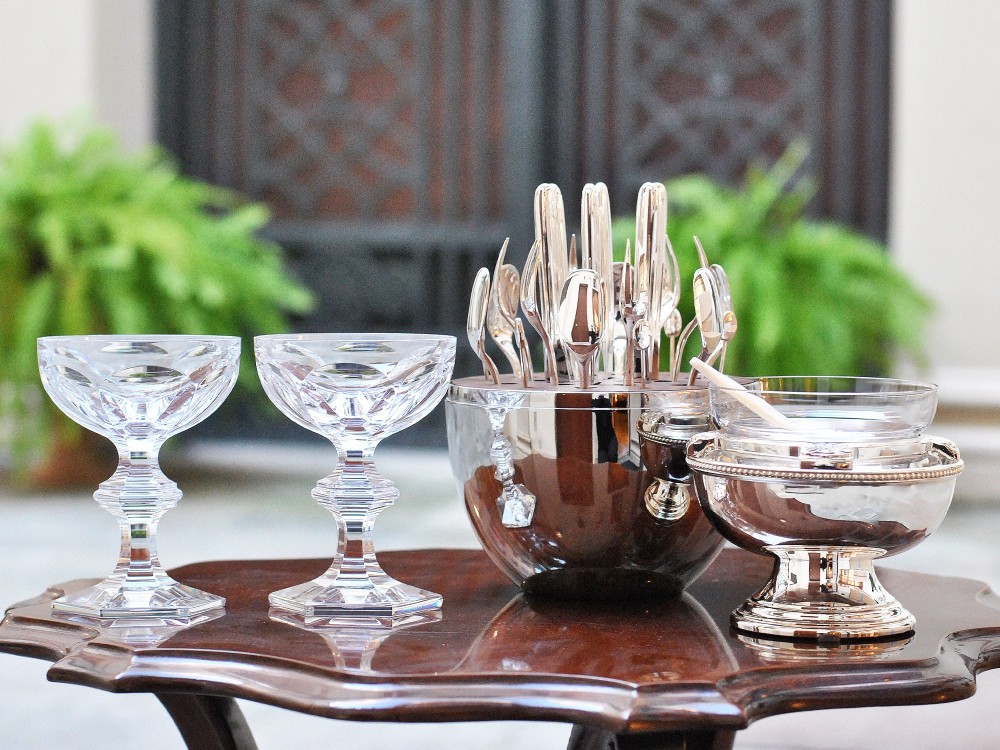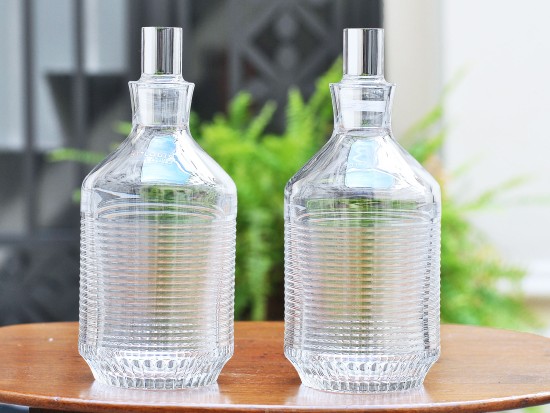The interviews:
Your job involves practicing serial drawing. How do you proceed?
Everything starts from the drawing. I draw a lot, always by hand. And I also throw away a lot of it. This process is how I discover the aesthetic concept of each of my projects. I like finding an idea, throwing it around, developing it and working in series – both for pieces destined for the kreo Gallery and for “drawing drawings”, i.e. drawings whose purpose is the drawing itself. Creating a collection is almost like creating a series. For Saint-Louis I discovered this basically quite simple concept of horizontal lines meeting vertical lines. This design works on all kinds of objects in the collection, from the table to the lamp. It creates a connection, a line and allows these objects to exist together or alone and become part of an everyday landscape.
What was your approach to crystal processing and the processing you already knew?
For me, ideas usually take precedence over materials. But my encounter with Saint-Louis is and remains the exception to this rule: it was impossible to ignore the crystal, or the existence of the manufacture, so I obviously took all of this into account when I started designing Cadence. The Saint-Louis lines are demanding and require perfect control of the crystal cut. While drawing I had in mind the gestures and artistry of the craftsmen. The lines of Cadence that meet and repeat themselves are truly a tribute to the virtuosity of the crystal craftsmanship of Saint-Louis. The factories, the laboratories are always emotional places. As I drew, I thought about the local landscape shaped by the activity of the crystal, the life of the village of Saint Louis and its living heritage. There is a certain intrinsic rigor, even a fervor linked to the narrative of manufacturing know-how. It was really very tangible for me. I felt this great sense of purpose and personal satisfaction, creating pieces that relate to Tutti and say something about Saint-Louis.
How did you approach the cutting technique?
The Saint Louis lines are challenging; require a perfect mastery of cutting. If the line deviates slightly, the meeting between the vertical and horizontal lines is broken. It is quite dramatic and precise, like crystal cutting. This geometry of lines also suggests an encounter, an encounter. I like this idea of giving material form to my meetings with friends or with ideas, using lines that meet and follow one another for a while and then continue on their own way. A line is by nature infinite, with no end or beginning. My design often captures a fragment of it. I must say that the lines occupy a lot of my time and therefore of my drawings.
How did you imagine the shapes?
Throughout its long history, the manufacture has cultivated a rich language of forms. I had to find my place within that language. After several sketches, going back and forth with my assistants, who translate and materialize my drawings in 3D, we decided to shorten the glass stems, traditionally tall in Saint-Louis, emphatic for today's everyday use. The lampshades are born from this same desire, to make crystal part of everyday life. I wanted to create a nice light, soft and diffused. Hence the idea of using the lampshade, which has already proved its worth, and the idea of combining translucent crystal and opaque paper.
You are also known for your use of color. Yet the pieces in the Cadence collection are made of clear crystal.
Above all, what we tried to preserve was the immaterial transparency of the crystal – its purity, its light – through the cutting and use of the paper as lampshades, both of which act as screens. By shielding the diffraction, the power of the crystal, we create a new tension, a new poetry.


















